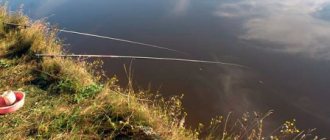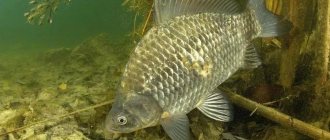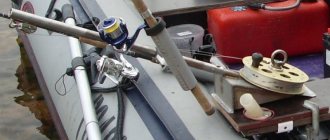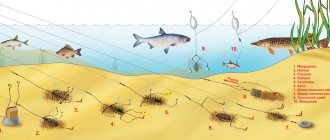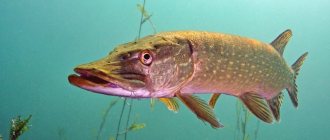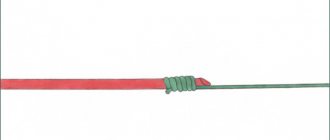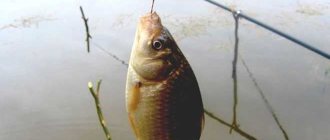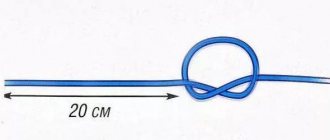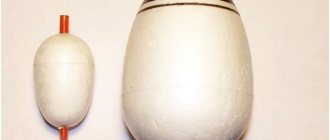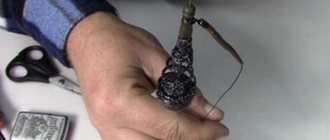Yuri 11/16/2020 879
Match rods are designed for long-distance fishing, when fishing conditions do not justify the use of a feeder. Among beginners and experienced fishermen, match tackle is becoming increasingly popular. The series of float tackle also includes a Bolognese and a fly rod. How do they differ, and what is the peculiarity of match fishing?
Match tackle
Match tackle is a lightweight float rod with guides and a reel, which is designed for long-cast fishing.
With it you can fish at a distance from 15 to 50 or even 70 meters from the shore.
A match fishing rod provides the angler with greater opportunities than a fly or plug-in float tackle.
It not only allows you to fish far from the shore at any depth, but also makes it possible to catch the most serious trophies thanks to the presence of a reel with a friction brake.
Gear device
The main components of a match fishing rod:
- rod;
- coil;
- main line;
- float;
- several pellet sinkers;
- leash;
- hook.
A match rod is a multi-legged plug or telescopic blank with a reel seat and guides. Its length can range from 3 to 7 meters; rods up to 4 meters long are most often used.
In match fishing, spinning reels are used, which allow long casts of light equipment.
Monofilament fishing lines are used. The best choice for catching the carp family for a match is a thin and heavy sinking line, quite elastic, without a memory effect.
In match fishing, special floats are used, which are distinguished by their large weight (a weight is attached to the lower part of the float) and good aerodynamic properties. They allow you to deliver bait to the fishing point, making long casts.
Several weights - pellets - are placed on the main line below the float. The length of the leash and the thickness of the fishing line for it, as well as the size of the hook, are selected based on the fishing conditions, the bait used, the size and activity of the fish.
Match fishing rod structure
The match rod is plug-in (rarely telescopic) and consists of several parts with several guide rings . The most popular length is around 4-4.5 meters, although there are longer ones on the market up to 5.5 m. A special reel is required for a match fishing rod. A standard spinning reel is not suitable for a match. It is better to prefer a reel with a smoother drag and a higher gear ratio (from 5) to ensure long-distance casting of very light baits. Perhaps also inertial and even sometimes fly fishing. The fishing line is monofilament with small diameters.
Floats for match fishing are relatively heavy with good aerodynamics. They are able to increase casting distance and deliver bait to the desired area. The sinker is used in the form of a fraction. Their number depends on the depth to which the cast is made. The hook depends on the type of fishing, the bait and the size of the fish. The fishing line is monofilament, preferably sinking.
Match fishing rod structure : Rod. Coil. Fishing line. Float. Sinker. Leash. Hook.
Blind and sliding equipment
The float can be fixedly fixed on the fishing line (blind equipment) or be able to slide along it between two stoppers (sliding equipment, slider).
The first option is used when fishing at relatively shallow depths, not exceeding the length of the rod. For example, with a four-meter blank, using a blind rig will be the best option when fishing at a depth of up to three and a half meters.
In a blind rig, the float is attached to the fishing line using one or two cambrics.
In a situation where the depth at the fishing point is greater than the length of the blank, the use of blind equipment will lead to difficulties when casting and retrieving. In this case, sliding equipment is used: a sliding float is located on the fishing line, and a stopper is located above it.
Bolognese fishing rod
Experienced fishermen prefer to use a Bolognese fishing rod because of its number of advantages. The Bolognese fishing rod is made of carbon fiber or carbon fiber, therefore it is quite flexible and durable. It is worth noting that although the Bolognese fishing rod is durable, you should not throw it too hard, since it is not very resistant to impacts. Many fishermen use the Bolognese fishing rod not only for recreational fishing, but also for sporting pleasure. The Bolognese fishing rod is effective on any type of reservoir, be it a lake or a river. If a Bolognese fishing rod is used on a river, it is suitable for any current strength.
Floats for Bolognese fishing rods
Reels for the Bolognese reel are selected inertial and inertialess, and the mounts on the fishing rod are stationary. The length of the rod on a Bolognese fishing rod ranges from 4 to 8 meters. The choice of length depends on the type of reservoir. The larger the body of water, the larger the rod required. The Bolognese fishing rod is universal for long-distance and deep-sea fishing. Also, the Bolognese fishing rod folds, which simplifies its transportation, and each section has several guide rings, usually from 5 to 10 pieces, depending on the length of the rod.
Differences between matcha and other fishing rods
There is a lot of gear that, at first glance, is absolutely the same. However, this is not so, we suggest you look into this issue.
From feeder
A feeder is a tackle consisting of a rod, reel and equipment, the main element of which is the feeder weight.
Feeder tackle is a type of donkey, match fishing rod is one of the types of float tackle. The feeder (especially its light version - picker tackle) is excellent, for example, for catching carp, crucian carp, tench, ide and can be used in the same conditions as a match fishing rod.
The advantage of the feeder is the convenience of fishing in windy weather (in these conditions its tip clearly shows the bite, while problems may arise with a match float dancing on the waves), the disadvantage is the inconvenience of fishing on a reservoir with a silted bottom in which the feeder gets stuck.
What to prefer - feeder gear or match gear - is also determined by the personal preferences of the fisherman.
From the Bolognese fishing rod
Bolognese tackle is a float rod, which consists of a rod with guides, a reel and equipment, which can easily be confused with a match rod. However, there are significant differences between them: the “lapdog” is not intended for long-distance casting; it is used for fishing in the current during the retrieve.
The presence of a reserve of fishing line on the spool of the reel allows you to release the equipment over a long distance.
When fishing with a Bolognese fishing rod, telescopic rods with a length of 4 to 7 meters and blind equipment are usually used; the reel can be either spinning or inertial.
Thus, despite the external similarity, Bolognese tackle differs from match tackle both in purpose and design features.
The “Bolonka” is very convenient for catching many types of fish, it is great for beginner fishermen, but it is not used for catching fish that stay in stagnant water.
From a fly rod
A fly fishing rod is a float tackle with a blind rig (without a reel or guide rings) that has a simple design, is comfortable to fish, and is very popular among fishermen.
But a match fishing rod provides the angler with more opportunities - it allows you to fish at a great distance from the shore and at great depths.
In addition, the presence of a reel with a drag makes it possible to catch large fish (for example, carp, bream).
Features of the Bolognese rod
The Bolognese fishing rod is a very popular fishing tool, invented in the Italian province of Bologne. There they began to use it for the first time. Many fishermen use it without even knowing that it is called that. This is a telescopic fishing rod. Her knees are inserted into one another. The number of rings through which the fishing line passes is equal to the number of bends. This tackle is used for fishing in fast currents. The float is well attached in two places. The length of the rod when disassembled is from 4 to 7 meters. Reels of various types (inertia and non-inertia) are suitable for installation on a Bolognese fishing rod.
We equip match equipment
Rod
The form for match fishing can have a fast or slow action.
According to the material they are distinguished:
- carbon fiber;
- composite.
Carbon fiber rods are lightweight and therefore provide the most comfortable fishing.
Their disadvantage is their higher price than composite forms.
Composite rods have proven themselves to be durable, easy to handle, and also attractive in price, which is why many fishing enthusiasts prefer composite rods.
According to the design of the fishing rod, it can be:
- plug;
- telescopic.
Plug match rods have a better action than telescopic rods and perform well in casting and retrieving. Telescopic rods are more convenient to transport.
According to the test, match forms can be divided into:
- lungs (test 2 - 10 g);
- universal (5 - 25 g);
- reinforced (10 - 40 g).
Rod handles can be made:
- from cork;
- neoprene.
Neoprene handles are softer and provide greater comfort to the angler, but are less durable than cork handles.
The main requirements for a reel seat are that it must provide reliable fastening of the reel and convenience (be ergonomic). It is better to choose a rod on which the reel seat can be moved higher or lower on the form.
Match fishing rods are distinguished by guide rings on high “legs”. This fastening allows you to avoid sticking of wet fishing line to the form.
Good match fishing rods are equipped with guide rings with a ceramic or zirconium-ceramic inner surface, which can significantly reduce line abrasion when casting and retrieving fish.
When choosing a match rod for catching crucian carp or roach or bream, you should take into account the size of the expected trophies and fishing conditions (required casting distance, depth at the fishing site, the presence of bushes and trees on the shore that will interfere with fishing with a long blank).
For most situations, a carbon fiber plug-in universal rod with a length of within 4 m will be optimal, such as:
- Shimano Aernos Match 390 FA;
- Shimano Catana DX Match;
- Shimano Vengeance AX Tele Match.
Coil
For match fishing, spinning reels with a large diameter spool with a low side are used, which allow long casts with light equipment.
Basic requirements for a reel for match fishing:
- good quality of line laying - this helps to cast the tackle over a greater distance and minimize the likelihood of it getting tangled;
- high gear ratio (usually from 5.7:1, but you can also use a 5.2:1 reel) - this allows you to quickly reel in the fishing line;
- a good friction brake - it should be reliable and allow for fine tuning; usually in match fishing, reels with a rear clutch are used;
- light weight - to ensure comfortable fishing, the mass of the reel should be slightly greater than the mass of the rod, and good match blanks usually weigh no more than 250 - 300 grams).
Manufacturers, as a rule, mark match series reels with the Match marking:
- Salmo Elite Match 8 30FD;
- DAIWA Harrier Match 2553 X;
- Cormoran Corcast Super Jet Match 4Pi.
Float
Basic requirements for a float for match fishing:
- good aerodynamics: the match float has a special shape, thanks to which it can be thrown far and accurately;
- good visibility: the antenna of the float should be clearly visible from a long distance (in match fishing, floats with multi-colored interchangeable tips are widely used, which make it possible to achieve good visibility of the float in any lighting);
- sensitivity: since long casting is required in match fishing, fairly heavy floats are used, but at the same time they must also clearly show even a careful bite; The match float is shipped in such a way that its body is submerged and only a small part of the antenna rises above the water.
One of the best and most popular floats is the Waggler float. It has a cigar-shaped body and an antenna stabilizer, and is equipped with several lightweight interchangeable tips. In its lower part there is a mounting ring and a thread onto which a replaceable load is placed.
For fishing with sliding equipment, slider floats are used (“slider” - “sliding”). Everyone uses this term in their own way, but in general, a slider is any float that slides freely along the fishing line.
The line can pass through the float (inside its body), through two attachment rings located at the top and bottom of the float, or through one ring located at the bottom of the float, on the keel.
It is the latter option that is usually used in match fishing.
It is worth noting that waggler floats can be attached using either a blind or sliding method.
Sinkers
Each float indicates the optimal load for it. For example, the inscription 7 + 3 means that the weight of the load attached to the keel part of the float is 7 g, and the total weight of the pellets that should be attached to the fishing line is 3 g. These pellets are strung on the main fishing line 15 - 20 cm from one another .
Differences between Bolognese and fly rods.
Differences between Bolognese and fly rods.
The most popular among amateurs are Bolognese and fly rods. There are several reasons for this. The most important thing is their versatility and ease of use. These rods can be used to fish both from a boat and from the shore, you just need to choose the right length. When fishing from a boat, shorter ones are used, this is explained by the ability to swim close to the fishing spot, and the inconvenience of using a large rod in a small boat. There is usually a lot of space on the shore, but you have to cast far.
The second reason is the availability of these rods; they cost much less than a plug or spinning rod. And Bolognese and fly tackle are much easier to use. Now let's look at the structure of these gears. Let's start with Bolognese. It is most often telescopic, has guide rings for fishing line and a reel mount. It allows you to cast quite long distances using a spinning or multiplier reel. But it should be borne in mind that if you want to cast really far, you will have to use a large weight, which can scare away the fish, and it will be more difficult to catch it, but if the reel has a friction, and you know how to adjust it, then this can seriously make the task easier for you . But many amateurs use Bolognese tackle as a fly rod. And in the end they end up with heavier and less practical gear. After all, the reel itself with the fishing line wound on it is often heavier than the rod itself. The fly tackle is a stick with a rig attachment at the end. Typically, such fishing rods are very light and allow excellent control of everything that happens underwater. And catching fish does not cause much difficulty and depends to a lesser extent on the skill of the fisherman, which is certainly good for a beginner. The swing is also great for fishing from a boat, this is explained by the ability to get closer to the fishing spot and the ease of replacing accessories on the fly rod, which is very important when fishing in cramped conditions. But fly tackle has its drawbacks. Firstly, the rod must be selected for the fishing conditions, and in order to fly fish on most bodies of water, you will need to have three to four rods of different lengths. But even with such an arsenal, you will not be able to cast further than 15 meters from the fishing spot. However, this loss is not significant, because at such distances the Bolognese tackle does not show very good results.
You can choose the tackle that suits you personally only after trying different options, but it is better to be able to fish with both a Bolognese fishing rod and a swing.
Share with friends:
Date of publication: 12/12/2013
Add a comment Cancel reply
Line and leash
Lines for match fishing are characterized by increased elasticity. This thread wears less on the guides and allows you to make good casts. Every fisherman should have a sinking line in his arsenal - it is indispensable when fishing in windy weather.
The thinner the line, the better; ideally its diameter should not exceed 0.12 mm. This thread provides maximum casting distance. But when fishing for fish that are held among algae and snags, you often have to use a stronger fishing line to avoid frequent losses of equipment on hooks.
For the leash, use a fishing line with a diameter of about 0.1 mm. The length of the leash is selected taking into account the fishing conditions: the activity of the individual, the level at which the fish is standing, the strength of the current.
What should you pay attention to when choosing?
The features of the Bolognese fishing rod also include some disadvantages. First of all, it is unstable to impacts. The Bolognese fishing rod is durable, but not adapted to strong impacts, so it must be treated with some care. The price of a Bolognese fishing rod also does not please many anglers. The fishing rod is suitable for amateur fishermen who can afford it, but not all beginners can afford it. It is also worth noting that equipping and caring for a Bolognese fishing rod requires costs and regular maintenance. Also, the Bolognese fishing rod is a little heavier than others.
What do we end up with? The Bolognese fishing rod is a very interesting tool for both amateur and sport fishing. It is more suitable for experienced fishermen who want to really enjoy fishing and test their strength against a strong river monster.
Of course, the features of the Bolognese fishing rod make you go to a river with a strong current and put a lot of effort into fishing. And where better to do this than on the Volga River near the Sazanya Bukhta base? A large river with a variable current, where you can find a stronger opponent, and besides, the current will constantly oppose the fisherman. The services of rangers will certainly find a place at the request of the fisherman, both for fishing from the shore and from a boat.
TAGS:
Installation of equipment - we assemble it ourselves
- When using up to 20 g of rigs, the main line is tied directly to the reel spool (when using heavier rigs, a shock leader up to seven meters long is tied to the spool, and the main line is tied to it;
- When installing a blind rig, the float is secured using one or two cambrics; when installing a sliding rig, two stop knots are knitted on the fishing line, then a stop bead is put on, then a float with a ring located in the keel part, and below it a small pellet is attached, which will serve as lower stop;
- Next, several pellet weights are attached to the fishing line; the fewer there are, the lower the likelihood of the tackle getting tangled;
- The leash can be tied to the main line using a swivel or using a loop-to-loop method; the optimal length for most situations is 20 - 40 cm.
Fishing technique with match tackle
Let's look at the techniques and methods of fishing with match gear. Useful for beginners and seasoned fishermen.
Step 1: Selecting a location and preparing bait
The first thing after arriving at a pond is to choose a place where fishing will be most effective. The shore should be clear enough so that tree branches overhanging the water do not interfere with casting, and thickets of aquatic plants allow you to pull out tackle and caught fish.
Having found a suitable place and laid out things, the angler can begin preparing bait. There are no special requirements for bait when fishing with match gear, the main thing is that its consistency should be such that it is possible to form balls that can be conveniently thrown to the required distance of several tens of meters.
Step 2: Sounding the Depth
While the bait absorbs water and reaches the desired consistency, you can begin measuring the depth and searching for a specific fishing spot. It is necessary to study the bottom topography and find sharp changes in depth - edges and holes. To study the bottom, it is convenient to use a special weight that is attached to a hook; you can also move the pellet weights located on the fishing line to one point.
After a suitable point has been found, it is necessary to fix the float at the required depth, mark the required length of fishing line corresponding to the distance to the fishing point with a marker or fix the fishing line to the reel clip, and also select a landmark on the opposite bank in the direction of which the casts will be made.
Step 3: Feeding
When the depth measurement and selection of the fishing point is completed, you can begin starting feeding. The tackle is thrown to the desired point, balls are formed from the bait and thrown, focusing on the float antenna.
The ability to accurately throw balls over long distances comes with a little practice.
In some reservoirs, the fish are quite shy, so during fishing it is better to feed them with a slingshot, making small balls that fall into the water without unnecessary noise. When the bite subsides, you can feed the point with large balls from your hand.
Step 4: Casting
To make an accurate cast, you need to release the float a meter from the tip of the rod. After the float falls onto the water, you should slam the line handle and, using the form, slightly submerge the line (this must be done when fishing in windy weather).
After this, the fishing rod can be installed on the stand. It is better to position the tip of the rod as close to the water as possible. During fishing, it is necessary to monitor the tension of the fishing line: when lowering the tip of the form into the water, the float should submerge - this indicates that good contact with the tackle has been ensured.
Step 5: Hooking
Since the equipment is located at a great distance from the shore, when fishing with a match rod, in most cases it is better to hook at the slightest movement of the float, which causes the fish to touch the nozzle.
The hook should be sweeping and powerful. In order not to tear off the weak lips of the fish (for example, crucian carp or crucian carp), you must first fine-tune the clutch.

